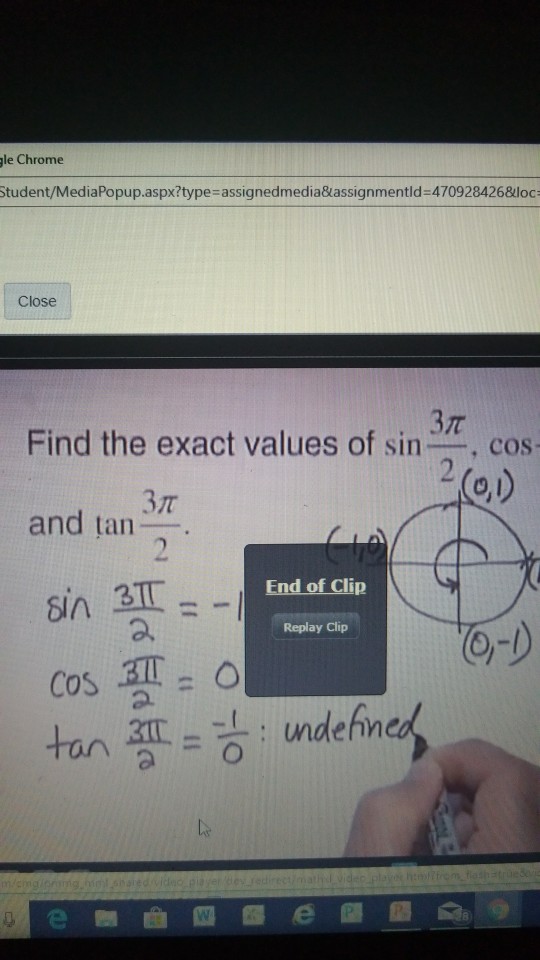The Negative Angle Identities In Trigonometry | Study.com
What is value of sin 30?What about cos 0?and sin 0?How do we remember them?Let's learn how. We will discuss what are different values ofsin, cos, tan, cosec, sec, cotat0, 30, 45, 60 and 90 degreesand how to memorise them.So, we have to fill this tableHow to find the values?To learn the table, we shoThe values of sin, cos, tan, cot at the angles of 0°, 30°, 60°, 90°, 120°, 135°, 150°, 180°, 210°, 225°, 240°, 270°, 300°, 315°, 330°, 360°When we find sin cos and tan values for a triangle, we usually consider these angles: 0°, 30°, 45°, 60° and 90°. It is easy to memorise the values for these certain angles. The trigonometric values are about the knowledge of standard angles for a given triangle as per the trigonometric ratios (sine, cosine, tangent, cotangent, secant andImportant note: There is a big difference between csc θ and sin-1 θ. The first one is a reciprocal: `csc\ theta=1/(sin\ theta)`. The second one involves finding an angle whose sine is θ. So on your calculator, don't use your sin-1 button to find csc θ. We will meet the idea of sin-1 θ in the next section, Values of Trigonometric Functions.Negative Trigonometric Ratios Chart. The below negative trigonometric ratios chart helps you to find the sin, cos, tan, csc, sec and cot trigonometric values of negative angles. In general, sin (-θ) is equal to -sin θ. The same rule is applied for all trigonometric ratios (sin, cos, tan, csc, cot, sec).
Trigonometry, trigonometric functions, sin, cos, tan, cot
With the same notation as before, we get the relations $$ b^2=d^2+h^2,\qquad a^2=(c+d)^2+h^2 $$ and subtracting gives $$ b^2-a^2=d^2-(c+d)^2=-c^2-2cd $$ or $$ a^2=b^2+c^2+2cd. $$ Now, if $\bar\alpha$ denotes the supplementary angle of $\alpha$, we can write the cosine law for obtuse triangles: $$ a^2=b^2+c^2+2bc\cos\bar\alpha. $$ When negativeBest Answer. Look at the graph below. The red triangle is in the fourth quadrant, where sin is negative, cos is positive and tan is negative. With this in mind we can see thatTo graph the inverse of the sine function, remember the graph is a reflection over the line y = x of the sine function. Notice that the domain is now the range and the range is now the domain. Because the domain is restricted all positive values will yield a 1 st quadrant angle and all negative values will yield a 4 th quadrant angle.sin (2 + x) = sin x cos (2 + x) = cos x tan (2 + x) = tan x Here x is an acute angle. and 2 = 2 180 = 360 Let s see why there are same. Suppose x = 390 x = 360 + 30 We note that x = 390 is the same as 30 So, we can write cos (

Sin Cos Tan Values (Formula, Table & How to Find)
sin 2 θ = 1 − cos 2 θ cos 2 θ = 1 − sin 2 θ tan 2 θ + 1 = sec 2 Note that "±" means it may be either one, depending on the value of θ/2 : Angle Sum and Difference Identities . Note that means you can use plus or minus, and the means to use the opposite sign. sinIf cos Θ = negative 4 over 7, what are the values of sin Θ and tan Θ? sin Θ = ±square root 33 over 7; tan Θ = ±square root 33 over 4 sin Θ = ±3 over 7; tan - 9737361What is the value of #sin -45^@#? How do you find the trigonometric functions of values that are greater than #360^@#? How do you use the reference angles to find #sin210cos330-tan 135#?Understanding and Using the Inverse Sine, Cosine, and Tangent Functions. In order to use inverse trigonometric functions, we need to understand that an inverse trigonometric function "undoes" what the original trigonometric function "does," as is the case with any other function and its inverse.Find the Other Trig Values in Quadrant IV cos(x)=7/25. Use the definition of cosine to find the known sides of the unit circle right triangle. Move the negative in front of the fraction. Find the value of tangent. Tap for more steps... Use the definition of tangent to find the value of .
take into accout, cos=adjoining/hypotenuse
I would draw a right triangle with 7 being the length of the hypotenuse and -4 being the leg adjacent to theta.Use pythagorean theorem to find the other leg.
7^2=x^2=4^2
x=sqrt33
(*4*) you'll be able to to find sin and tan in keeping with your triangle.
SIn=opposite/hyptenuse
=sqrt33/7
tan=opposite/adjoining
=-sqrt33/4
remember the fact that the 4 remains negative for tan!
Also, take note SOH CAH TOA
2 C Factorise F X Completely 4 5 A Sketch The Graph Of Y 3

MAC 1114 TEST #2A (1).pdf - MAC 1114 FALL 2017 NAME HARRIS

Precalculus Archive | February 15, 2017 | Chegg.com

Engineering Vibrations Solutions

NCERT Solutions For Class 11 Science Math Chapter 3

Unit 1A - Unit Circle Test Review.pdf - UNIT 1A UNIT

Epsilon Delta Proof Of Sinx Over X | Inequality

: Cos2
OpenStax CNX

How Do You Use Inverse Trigonometric Functions To Find The

Trigonometry Archive | March 02, 2018 | Chegg.com

Advanced Engineering Mathematics Dennis G Zill 2nd

0 comments:
Post a Comment